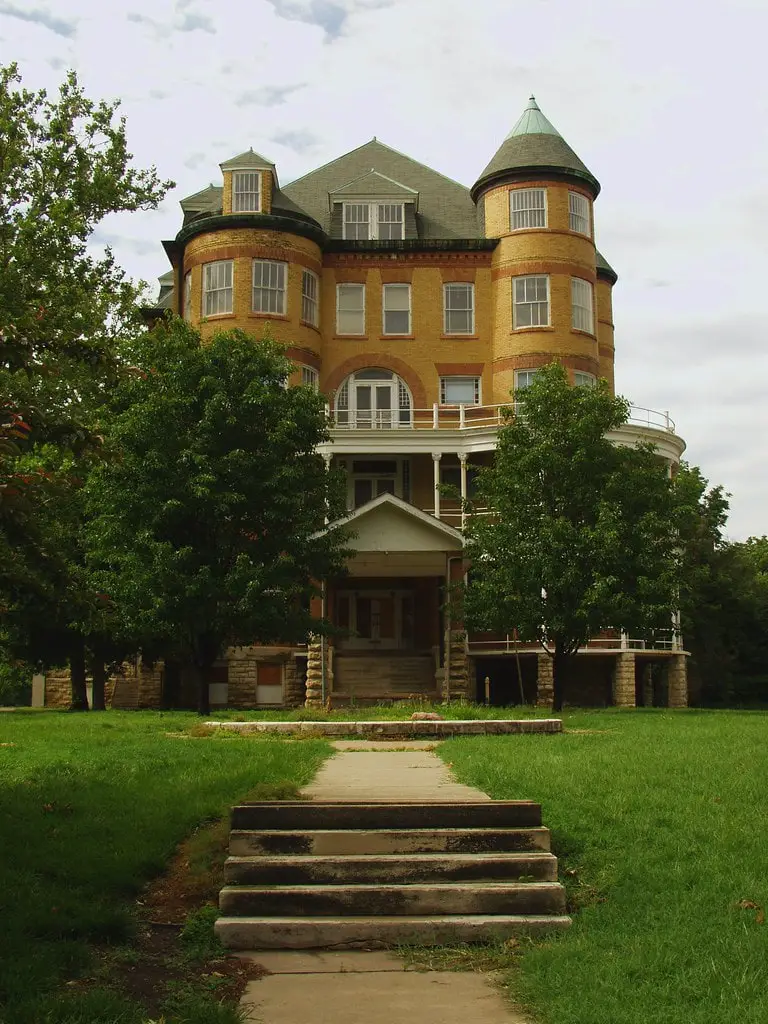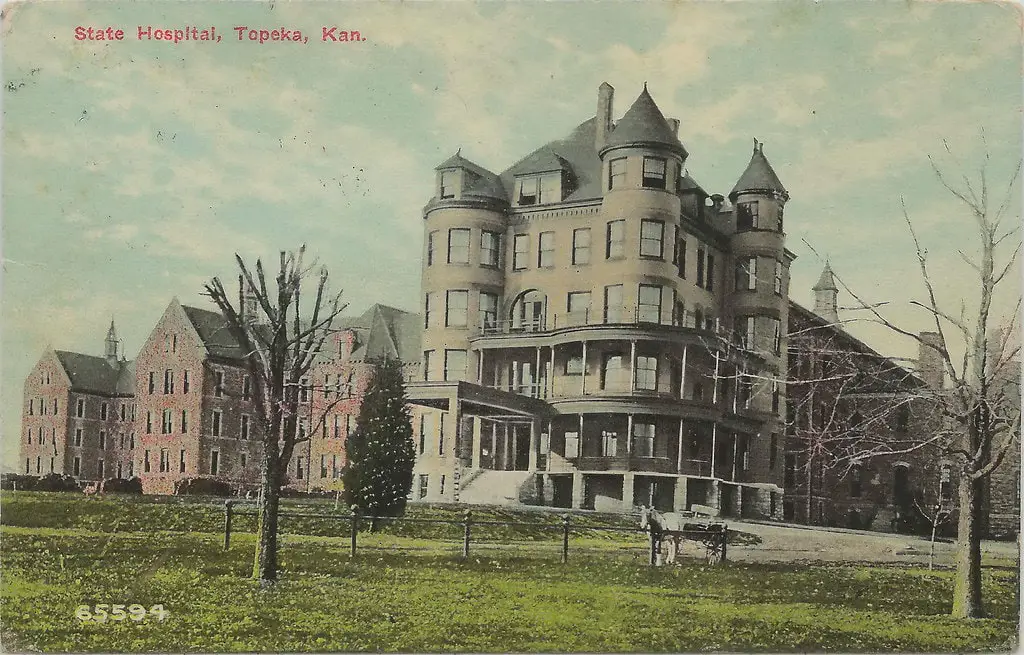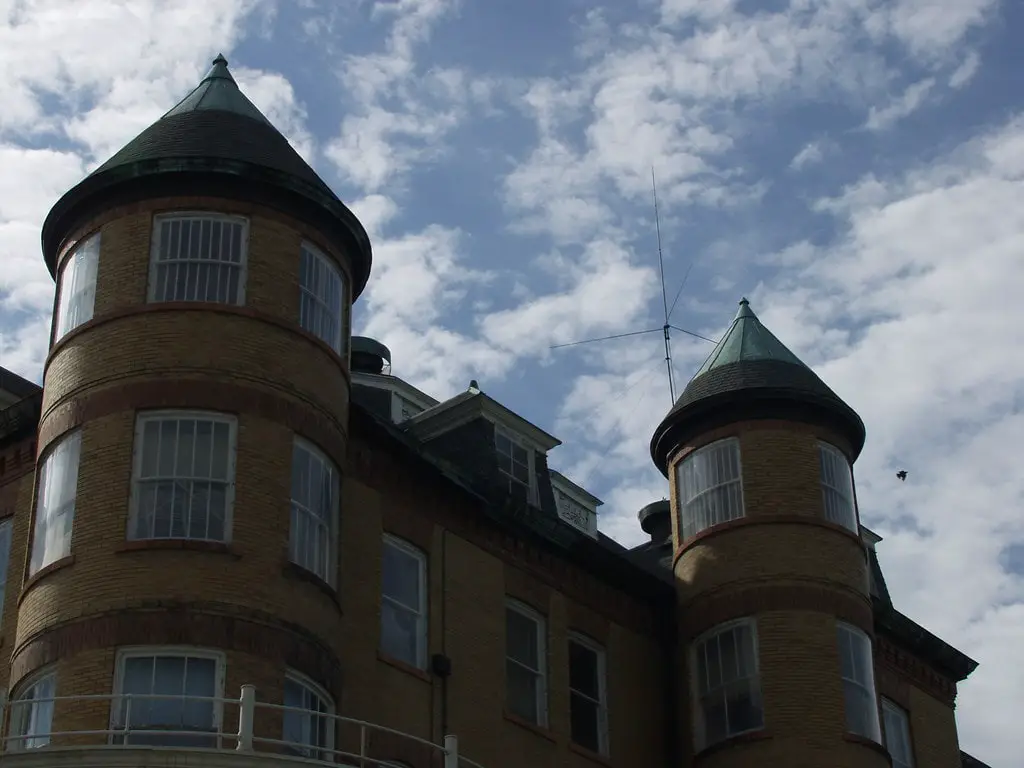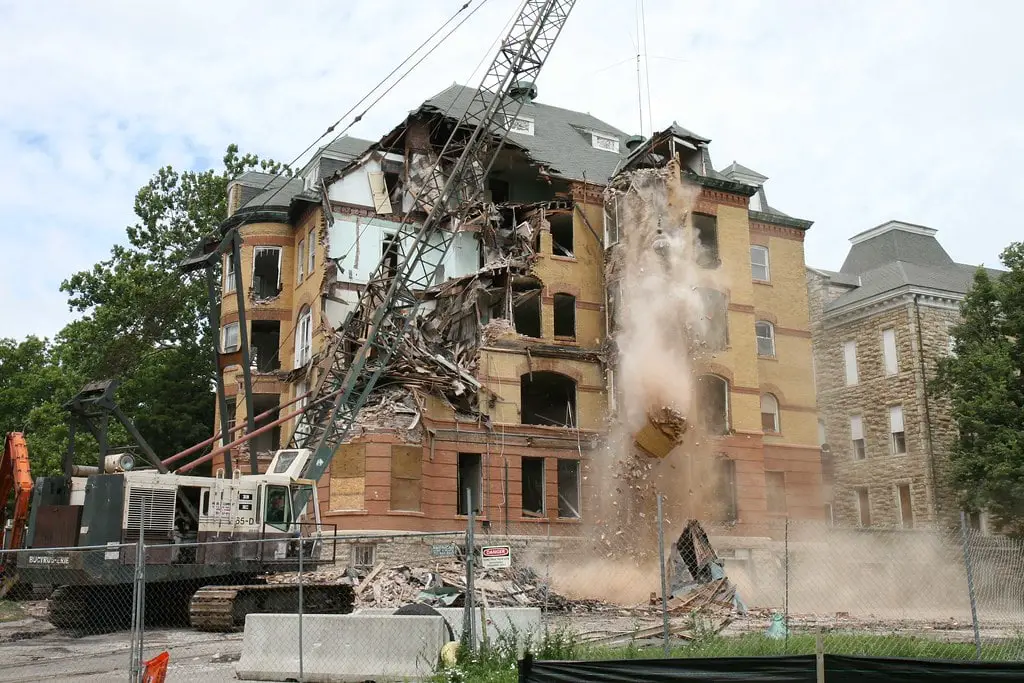The bustling city of Topeka, Kansas, stands as a testament to its past - a past intertwined with tales of triumph, struggle, and transformation.
The once towering Topeka State Hospital, originally known as the Topeka Insane Asylum, paints a vivid picture of over a century of mental health care practices, societal attitudes, and human narratives.
A Grand Vision and its Architectural Marvel
The hospital was born out of necessity when the Osawatomie State Hospital, Kansas's primary mental health institution, was overwhelmed with many patients.
So, in 1879, the Topeka State Hospital opened its doors, providing a much-needed respite to the overcrowded Osawatomie hospital.
Its design was a marvel of the era. Architect John G. Haskell, who was also part of the team that designed the Kansas State Capitol, was entrusted with creating a space to facilitate mental healing.
Adhering to the Kirkbride Plan, an architectural concept prevalent in the late 19th century, the hospital was envisioned as a place that would offer a therapeutic environment to its inhabitants. The building's grandeur spoke of an era's hope and optimism in treating mental health conditions.
However, as time passed and the hospital ceased operations, most of the structure was razed. Where once the grand hospital stood, Hummer Sports Park now rests, a hub of activity and community engagement.
The Dark Shadows of the Past
However, the hospital's grand design and noble intentions were overshadowed by a troubling undercurrent.
In the early 1900s, whispers of patient abuse, neglect, and unthinkable atrocities began circulating. Stories of patients being confined or chained for long periods cast a dark shadow over the institution's reputation.

One poignant example was the plight of John Crabb, a fifty-nine-year-old immigrant from Denmark. Despite being mentally sound, Crabb found himself wrongfully incarcerated within the hospital's confines.
This controversial case and growing public outcry prompted significant changes at the hospital in the 1940s. These reforms aimed to improve patient treatment, marking a turning point in the hospital's history.
The Sterilization Controversy
Another chapter in the hospital's story was the controversy around sterilization laws. In 1913, Kansas passed its first sterilization law, targeting individuals deemed "habitual criminals, idiots, epileptics, imbeciles, and insane."
The law's enforcement led to a second law in 1917 that streamlined the sterilization process, eliminating the need for court approval.
Over the years, the rate of sterilizations fluctuated, peaking in the mid-1930s. However, by 1961, sterilizations had ceased entirely.
A substantial number of these sterilizations took place at the Topeka State Hospital, sparking intense debates about ethics, human rights, and the role of medical institutions in societal control.

The Tragic Case of Stephanie Uhlrig
As the hospital navigated controversies and changes, it faced a chilling incident that would forever mar its history.
Stephanie Uhlrig, a music and activity therapist, was tragically murdered by Kenneth D. Waddell, a patient under state mental health authorities' care.
This horrifying event occurred in 1992, leading to heightened concerns about the safety of hospital staff and patients and prompting a reevaluation of hospital policies and procedures.
Workplace Harassment and Legal Battles
In the following years, the hospital found itself embroiled in legal battles. A significant incident involved psychologist Cynthia T., who took legal action against the hospital and the state in 2001.
This followed a traumatic event where she became a victim of sexual assault by a patient, leading her to raise allegations of sexual harassment.

The jury determined a sexually hostile work environment existed at the hospital, leading to a dispute over whether the hospital should be held legally responsible. This case was a stark reminder of the challenges and risks those working in mental health institutions face.
The Closing of an Era
By the late 20th century, mental health care shifted towards community-based programs. This transition, coupled with financial considerations, led the Kansas Legislature to decide to close one of its three mental hospitals.
The Topeka State Hospital, having lost its accreditation to receive federal Medicare and Medicaid payments in 1988, was chosen. On May 17, 1997, the hospital closed its doors, marking the end of an era.

Legacy and Transformation
Today, the ground where the hospital once stood serves as a reminder of Kansas's transformative mental health care journey. From the grandeur of its architectural design to the controversies and reforms, the story of the Topeka State Hospital is a mirror of society's evolving understanding of mental health.
The hospital's closure did not mean the end of its narrative. Instead, it marked a transformation. Today, the former hospital grounds are home to Hummer Sports Park, a place of community, engagement, and joy.
In the end, the story of the Topeka State Hospital is not just about a physical structure. It's about the people who walked its corridors, the societal attitudes it reflected, and the transformations it underwent.
It's a testament to mental health care's resilience and constant evolution, a chapter in history that continues to inform and inspire.
2024: The Transformation of Topeka State Hospital Grounds
The former Topeka State Hospital is now the site of Connect55+ Topeka, an independent senior living community on the Kanza Campus. This area has been redeveloped to offer a peaceful, active lifestyle for those 55 and over.
Connect55+ Topeka provides easy access to key city locations. Residents find themselves near medical services, pharmacies, and grocery stores.
The development sits in a prime spot in Topeka, Kansas, with nearby museums, parks, and restaurants adding to its appeal.
The grounds, now free from the haunting memories of the hospital's past, have been repurposed with modern amenities.
Connect55+ features well-maintained green spaces, a variety of on-site activities, and social programs designed to keep seniors engaged. The views of the Kansas State Capitol dome from many of the apartments add a unique charm to the community.
The shift from the hospital's dark history to a thriving senior community marks a practical use of the land, bringing life and opportunity where there was once only despair.
The redevelopment of the property mirrors a broader trend of reusing former institutional sites for new, constructive purposes.

These facilities need to be in service again. to simply let them roam the streets as homeless do not give them the services or medication they obviously and as we saw last week they are attacking people like the couple in Lawrence last week..it's an injustice the lack of services they are getting
Thanks for your comment. I also believe that we should invest more in mental health infrastructure. The benefits of properly funded and maintained facilities would extend far beyond those directly receiving care.